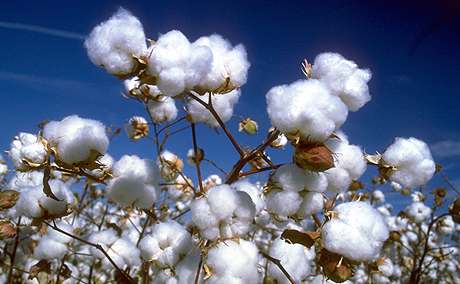Cotton vs. Linen vs. Polyester – What's the Difference?
 |
While cotton, from the cotton plant, and linen, from the flax plant, are both natural plant fibers (cellulose), there are many differences between them. Polyester fabrics are synthetic fabrics that are produced from an array of chemicals. Below we compare cotton, linen and polyester in a non-exhaustive array of categories |
Strength and Longevity

Linen is known to be the world’s strongest natural fiber. It is so durable it’s even used in paper money to increase strength! It is thicker than cotton and linen fiber has variable lengths, most of which are very long. This contributes to strength, which contributes to longevity. Linen lasts a very long time.

Polyester are also extremely durable and strong due to its molecular bonds.
The strength of cotton is achieved through spinning multiple fibers into yarn and weaving the yarn into fabric.
Hand (referring to the way it feels in your hand)
From the flax plant, Linen is a bast fiber. Known to be crisper than cotton, linen becomes supple through handling. It gains elegance and softens to behold the most fluid drape. Though it is has more natural texture than cotton, it is silky with high luster.
Wrinkles? Both cotton and linen are associated with wrinkles. Linen fibers have a natural resin called ligan . At first, the fibers are stiff and crease easily. The wrinkles become smoother through handling and use.
Polyester usually doesn’t crumple easily and can be dry cleaned without much hassles.
The Cotton plant yields fluffy fiber clusters called bolls. They are very soft to the touch and resilient to handling. Cotton fabrics can be very soft and no other plant fiber can offer the same type of comfortable hand at first touch.
Interactivity with moisture
Natural fibers love water. Linen is thought of as nature’s wicking fiber. It can gain up to 20% moisture before it will first begin to feel damp. Cotton will absorb more than 25% its weight in water.
Additionally, linen is known to gain strength when wet. It has the natural ability to prevent bacteria growth. For bag linings, this is very important as we carry all sorts of “goodies” in our bags.
The affinity of cotton and linen to moisture is one reason why natural fibers are most comfortable to wear and feel. They interact well with our bodies and contribute to our comfort.
Polyester is hydrophobic by nature and very quick drying. Hence, it is also a strong candidate for helping to keep your bag interiors clean.
In Summary:
Each fiber brings its own natural beauty and attributes. Together, they are a winning combination.
Cotton, resilient and soft to the touch.
Linen, smooth and fluid.
Polyester, strong, easy to clean, less breathable



